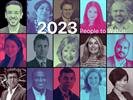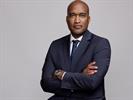Arun Sudhaman 05 Jan 2012 // 12:00AM GMT
Do you think that data and analytics are reshaping the PR profession? Join the LinkedIn discussion of this issue.
Printer supplies are not exactly the stuff of which dreams are made. Yet a recent HP campaign may help explain why the public relations industry is pinning its hopes on the transformational potential of a more data-driven world.
The company’s problem was decidedly straightforward. It wanted more people to buy its printer cartridges, rather than the cheaper generic versions that have become increasingly popular. Rather than charging ahead with a stunt-filled PR blitz, though, Porter-Novelli began its work by listening closely to some surprisingly animated social media discussions about printer ink.
The result is Inkology, a digital-fuelled content platform that has helped HP cartridges increase their consumer engagement, awareness and - crucially - sales. Data analysis helped define two important elements in its success. First, by initially discovering that two specific cartridge types were of particular appeal to the audience in question, allowing content to be focused on these models. Second, by finding that distinct portions of the effort’s Facebook presence resonated best with different user communities, such as students and businesses - in turn enabling mid-campaign adjustments that eventually led to higher views and greater interaction.
Our investigation into PR and data is a three-part series. Jump to the following sections: Five ways data is changing PR |
The Inkology initiative is one of many that suggest a tipping point in public relations practice, where a dramatic surge in easily accessible digital data, coupled with affordable analytics tools, are combining to make sophisticated research and planning of campaigns a much more commonplace activity. In an era of Moneyball-inspired statistical analysis, where the likes of Wal-Mart has acquired a digital analytics firm, the idea that PR strategy amounts to little more than relationships and intuition seems jarringly anachronistic. And for an industry that often battles the debilitating perception of being fluffy and imprecise, it is a metamorphosis that cannot come soon enough.
“For the first time in twenty years things may be changing seismically,” says Lewis PR CEO Chris Lewis, who compares the situation to the fast-moving, hard-charging sport of ice hockey. “There will be large prizes for those agile enough to skate where the puck is going to be.”
Amid the inevitable collisions and bruises that his vision entails, Lewis points to numerous ways in which the “data revolution” is already impacting the world of PR, including search analytics, campaign measurement, infographic journalism and new tools and products. For many, these spell out a potentially golden opportunity for PR people to finally prove that their demands for more marketing dollars are grounded in evidence.
“From my perspective it’s game-changing,” says Israel Mirsky, who heads emerging media and technology at Porter-Novelli. “If I asked you to name the last ad you saw, you probably couldn’t do it, but you could tell me about three news articles you’ve read and about things shared by your friends on social networks. That's a totally different level of attention that PR should be recognized for in marketing mix models, but the data hasn't really been there.”
Propelling this change are the unprecedented levels of consumer intelligence being generated through digital media usage, information that can be rapidly mined through an array of affordable tools. IBM VP Deepak Advani, whose company has invested more than $15bn in data analytics, believes that the new simplicity of monitoring and insight tools - like IBM’s own Cognos Consumer Insight - represent a fundamental step forward. “The tools had been so difficult to use that you required an army of PHDs to do something with this data. The tipping point is that the tools have become much simpler now. You can build a predictive model using three clicks.”
Information overload
From such mega-channels as Twitter and Facebook, and the bewildering proliferation of smaller platforms that define the internet, comes a dizzying plethora of information about consumer likes and dislikes, brand preferences and conversations. “There’s never been so much content and data available for PR professionals as there is today, but the mass quantity of information can be daunting,” explains March PR managing partner Martin Jones. “Yet buried in all this content is information that can provide real insight for PR professionals.”
Figuring out what to measure can be tricky, particularly for an industry that would be hard-pressed to call itself numerate. Much industry debate has centred around the ability to measure a campaign’s effectiveness, a preoccupation that Atomic PR CEO Andy Getsey believes is hindering a fuller appreciation of sophisticated information analysis.
“The highest potential use of data goes far beyond metrics and measurement,” says Getsey. ”It calls for applied analytics - to more confidently and concretely build, shape and protect our clients' brands by increasing the volume, frequency, calibre and general usefulness of their self-produced content; their media coverage; their connections with relevant communities and individuals; and, their ties to related topics and trends in digital and social media.”
That is a broad spectrum indeed, ranging from, at one end, consumer research that results in changed messaging to, at the other, the influencer identification maps that have by now become de facto in digital circles. Yet despite the appeal of of these potential applications, Getsey believes the PR industry is barely scratching the surface when it comes to its application of data analysis.
“In terms of its practical and consistent strategic application on a broad scale by agencies, it’s not changing our industry,” claims Getsey. ”But with widespread pressure from clients and economics pushing agencies to embrace and re-engineer their core processes around actual communications analytics – not just measurement, it should.”
“PR has a strong disregard for data”
Perhaps the biggest obstacle is the general discomfort that such a shift entails, from the softer skills of access and facilitation, to the harder abilities of monitoring, analysis, insight and evaluation.
“PR has a strong disregard for data,” says MindShare UK social media head Mat Morrison, a digital veteran who previously worked at Porter-Novelli before joining the media agency. “It doesn’t benefit when the data is accurate - it benefits when the data tells the story it needs to tell.”
Morrison is probably being deliberately provocative, not least because his own firm are as engaged in the race for social media insight as any marketing discipline. The PR industry is not alone in its efforts to support its work with numbers and science. In truth, it is probably behind the curve, particularly when you consider the heritage of media agencies, digital firms and CRM shops, all of whom hail from a background that is considerably more data-savyy than their PR counterparts.
“We’re building toolkits, and doing the arithmetic bit. We’re licensing from multiple data and platform vendors,” says Morrison of media agencies like MindShare. “It ‘may’ be that we need to find a comfortable way of working with PR partners to turn the insight into something that has real business impact for clients.”
And what of all the PR firms also building tools and developing their own monitoring products and services? “I think they are smart and they understand they will get headlines,” responds Morrison. “Will they get money? No. Maybe a little. It’s a short-term commercial advantage.”
PR by the numbers?
The prospect of a future where PR people can plan more predictably successful campaigns must appeal to risk-averse corporations contending with choppy economic conditions. But Firefly co-founder Claire Walker speaks for many when she expresses a reservation that data proficiency could usurp the spontaneous creative impulse that often results in great PR work.
“An over-reliance on data and analytics can mean a lack of risk-taking and perhaps stifled creativity - both bad habits,” contends Walker. “PR exclusively by the numbers is not great at all. You need to be sure you don’t get lost in the numbers and lose the ability to know what will fly, and sometimes that’s instinctive.”
Advani admits that this is always a concern, but uses a recent IBM example to demonstrate how consumer insight can trump intuition. A telco facing high customer churn found that the trend was highest among grandmothers sharing homes with their grand-daughters, who kept advising them to change phones.
“There is a lot of data that, if you say I’m going to run my business just based on intuition, you are absolutely going to fail,” counters Advani. “I also don’t think that intuition goes away. If analytics is giving you some thoughtful insightful information, people end up making better decisions.”
The issue is likely to become a critical one, as methods for understands and analysing consumer data become ubiquitous. For Mirsky, the solution lies in ensuring that analysts are good at what they do and, crucially, tightly integrated within account teams.
“Sometimes building recommendations from your data can be an exercise in navel-gazing. It’s easy to focus on what’s there as opposed to what’s not,” points out Mirsky. “That’s why I really like my analysts to be very close to the planning process and the account teams in general.”
Shifting skills
Finding those analysts, and assimilating them into an agency culture that is not necessarily familiar with their skills, may also prove challenging. The situation is symptomatic of the digital-inspired “geek revolution” that is already changing talent profiles across the PR profession. In this case, in the words of Lewis, “aspiring PR pros today need to show they can handle most analytics tools - from Google Analytics to Facebook Insights - and can make a mean spreadsheet.”
Even if Advani’s “army of PHDs” are no longer required, there is still a call for the types of skills that are already in considerable demand in other marketing disciplines and professions. And they need to be combined with the very specific abilities that make for smart communications planning.
“This means hiring strategies need to change,” says Jones. “The potential for analytics in PR does represent a departure from traditional agency services and most agencies are not ready for it.”
Ossification and irrelevance
Despite the many hurdles, there is enough to suggest that the era of big data holds considerable promise for the PR profession. “The PR industry has long been challenged to show the impact of their programs,” says Waggener-Edstrom SVP Karla Wachter. “Often, when measurement did take place, it was largely impression based, which we know is one of the weakest metrics for showing impact. However, with the emergence of online, offline and social data, now at our fingertips, there are no more excuses.”
That will come as good news for under-pressure comms directors, who continue to try and shake off the reputation that they represent cost rather than value. More significantly, perhaps, Lewis believes that advances in data could help reshape an industry that is becoming dangerously ossified.
Lewis points out that the Holmes Report’s Global Rankings reveal an industry that has turned into an “oligopoly”. “There is enormous concentration of fees into the major brands with the top ten firms capturing one half of the industry revenue. With the notable exception of Edelman, the holding companies that own these brands also capture any further revenue overspill into the top fifty through their conflict brands.”
The top 50 firms, notes Lewis, account for 80 percent of the revenue generated by the top 250. “And it’s not getting any more fairly spread. In recent years, the richest and biggest agencies have gotten richer and bigger.”
Lewis believes that innovation could help level the playing field. “This is the opportunity for the challenger brands in the industry. Now is the time for them to invest. But many people will be asking how exactly they can do that when margins and revenues are under greater pressure than ever before. The answer is challengers must do what the bigger players are unwilling or unable to do.”
If the PR industry doesn’t get to grips with the deluge of data, adds Mirsky, it risks irrelevance. “We’re in a situation where social media research is being lobbed over the fence constantly. If we don’t have a better understanding of what the audience is doing than anybody else than we lose an important strategic position in the chain. We have to be better or we will be subsumed by the people that understand the customer better than we do.”
In the accompanying sections, the Holmes Report investigates in further detail how the era of big data is reshaping the PR profession:


































.jpg)































